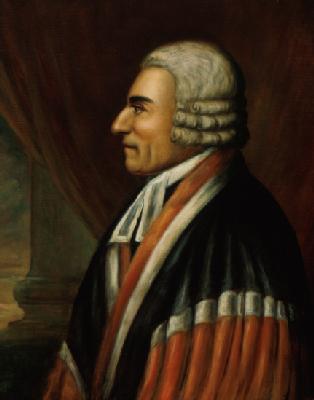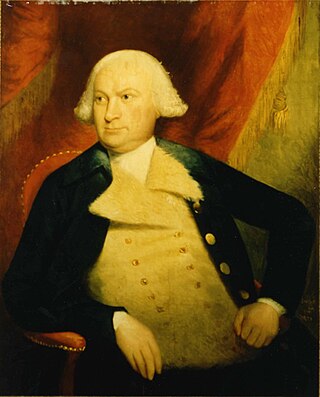
An associate justice of the Supreme Court of the United States is a justice of the Supreme Court of the United States, other than the chief justice of the United States. The number of associate justices is eight, as set by the Judiciary Act of 1869.

The chief justice of the United States is the chief judge of the Supreme Court of the United States and is the highest-ranking officer of the U.S. federal judiciary. Article II, Section 2, Clause 2 of the U.S. Constitution grants plenary power to the president of the United States to nominate, and, with the advice and consent of the United States Senate, appoint "Judges of the supreme Court", who serve until they die, resign, retire, or are impeached and convicted. The existence of a chief justice is only explicit in Article I, Section 3, Clause 6 which states that the chief justice shall preside over the impeachment trial of the president; this has occurred three times, for Andrew Johnson, Bill Clinton, and for Donald Trump’s first impeachment.

William Paterson was an American statesman, lawyer, jurist, and signer of the United States Constitution. He was an Associate Justice of the United States Supreme Court, the second governor of New Jersey, and a Founding Father of the United States.

The Supreme Court of the United States is the highest-ranking judicial body in the United States. Established by Article III of the Constitution, the detailed structure of the court was laid down by the 1st United States Congress in 1789. Congress specified the Court's original and appellate jurisdiction, created 13 judicial districts, and fixed the initial size of the Supreme Court. The number of justices on the Supreme Court changed six times before settling at the present total of nine in 1869. As of June 2022, a total of 116 justices have served on the Supreme Court since 1789. Justices have life tenure, and so they serve until they die in office, resign or retire, or are impeached and removed from office.
In the United States, a recess appointment is an appointment by the president of a federal official when the U.S. Senate is in recess. Under the U.S. Constitution's Appointments Clause, the president is empowered to nominate, and with the advice and consent (confirmation) of the Senate, make appointments to high-level policy-making positions in federal departments, agencies, boards, and commissions, as well as to the federal judiciary. A recess appointment under Article II, Section 2, Clause 3 of the Constitution is an alternative method of appointing officials that allows the temporary filling of offices during periods when the Senate is not in session. It was anticipated that the Senate would be away for months at a time, so the ability to fill vacancies in important positions when the Senate is in recess and unavailable to provide advice and consent was deemed essential to maintain government function, as described by Alexander Hamilton in No. 67 of The Federalist Papers.

William Cushing was one of the original five associate justices of the United States Supreme Court; confirmed by the United States Senate on September 26, 1789, he served until his death. His Supreme Court tenure of 20 years and 11 months was the longest among the Court's inaugural members. In January 1796, he was nominated by President George Washington to become the Court's Chief Justice; though confirmed, he declined the appointment. He was the last judge in the United States to wear a full wig.

The Judiciary Act of 1789 was a United States federal statute enacted on September 24, 1789, during the first session of the First United States Congress. It established the federal judiciary of the United States. Article III, Section 1 of the Constitution prescribed that the "judicial power of the United States, shall be vested in one Supreme Court, and such inferior Courts" as Congress saw fit to establish. It made no provision for the composition or procedures of any of the courts, leaving this to Congress to decide.

The Jay Court refers to the Supreme Court of the United States from 1789 to 1795, when John Jay served as the first Chief Justice of the United States. Jay served as Chief Justice until his resignation, at which point John Rutledge took office as a recess appointment. The Supreme Court was established in Article III of the United States Constitution, but the workings of the federal court system were largely laid out by the Judiciary Act of 1789, which established a six-member Supreme Court, composed of one Chief Justice and five Associate Justices. As the first President, George Washington was responsible for appointing the entire Supreme Court. The act also created thirteen judicial districts, along with district courts and circuit courts for each district.

The Ellsworth Court refers to the Supreme Court of the United States from 1796 to 1800, when Oliver Ellsworth served as the third Chief Justice of the United States. Ellsworth took office after the Senate refused to confirm the nomination of Chief Justice John Rutledge, who briefly served as a Chief Justice as a recess appointment. Ellsworth served as Chief Justice until his resignation, at which point John Marshall took office. With some exceptions, the Ellsworth Court was the last Supreme Court to use seriatim opinions.
In the history of the United States, there have been approximately 32 unsuccessful recess appointments to United States federal courts. 22 individuals have been appointed to a United States federal court through a recess appointment who were thereafter rejected by the United States Senate when their name was formally submitted in nomination, either by a vote rejecting the nominee, or by the failure of the Senate to act on the nomination. These individuals served as federal judges, having full authority to hold office and issue rulings, until their rejection by the Senate. Five individuals were appointed but resigned either before the Senate voted on their nomination, or before a formal nomination was even submitted. Another five individuals were appointed but never assumed the office.

John Rutledge Jr. was an American Founding Father, politician, and jurist who served as one of the original associate justices of the Supreme Court and the second chief justice of the United States. Additionally, he served as the first president of South Carolina and later as its first governor after the Declaration of Independence was signed.

The nomination and confirmation of justices to the Supreme Court of the United States involves several steps, the framework for which is set forth in the United States Constitution. Specifically, Article II, Section 2, Clause 2, provides that the president of the United States nominates a justice and that the United States Senate provides advice and consent before the person is formally appointed to the Court. It also empowers a president to temporarily, under certain circumstances, fill a Supreme Court vacancy by means of a recess appointment. The Constitution does not set any qualifications for service as a justice, thus the president may nominate any individual to serve on the Court.

Oliver Ellsworth was a Founding Father of the United States, attorney, jurist, politician, and diplomat. Ellsworth was a framer of the United States Constitution, United States senator from Connecticut, and the third chief justice of the United States. Additionally, he received 11 electoral votes in the 1796 presidential election.

John Rutledge was twice nominated by President George Washington to the Supreme Court of the United States, being nominated and confirmed in 1789 as an associate justice, and being unsuccessfully nominated in 1795 to serve as chief justice.












